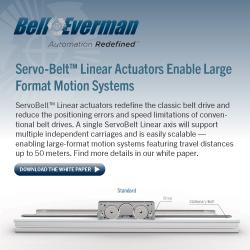Empowering the Next Generation in Agriculture’s Tech-Driven (r)evolution
As we look towards the future of agriculture, one crucial concern arises - how do we make this age-old industry more appealing to the younger generation? Agriculture has been the backbone of societies for centuries, but today, it's facing a challenge as more people are leaving the field than joining. However, we believe there's a path forward to revitalize this essential sector and make it not just sustainable, but also attractive to the tech-savvy youth of today.
As we look towards the future of agriculture, one crucial concern arises - how do we make this age-old industry more appealing to the younger generation? Agriculture has been the backbone of societies for centuries, but today, it's facing a challenge as more people are leaving the field than joining. However, we believe there's a path forward to revitalize this essential sector and make it not just sustainable, but also attractive to the tech-savvy youth of today.
Embracing Remote Learning:
Agriculture has traditionally been hands-on and manual, with pen and paper systems still prevalent. But the times are changing! Remote learning opportunities can bridge the gap between the old and the new, bringing essential agricultural knowledge to young minds regardless of their physical location. By integrating technology into education, we can empower the next generation with the skills they need to drive innovation in the industry.
AI AgriTechnologies - Closing the Knowledge Gap:
With emerging AI AgriTechnologies, we have a unique chance to make agriculture more efficient and bridge the knowledge gap between generations. By providing supervised training with AI-driven systems such as EcoSense, we can ensure that valuable expertise is passed down while simultaneously making processes more accessible.
Urban Agriculture Revolution:
The landscape of agriculture is evolving. Urban areas are witnessing a surge in indoor farms, bringing agriculture closer to city dwellers. This not only reduces the distance food travels but also creates a way for the younger generation to engage with farming without leaving their metropolitan environments.
Tech Integration for a Bright Future:
The role of technology in modern agriculture cannot be overstated. Precision farming, data analytics, sensor data, and automation are transforming the way we cultivate crops. These advancements not only increase productivity but also appeal to tech enthusiasts who are passionate about making a tangible impact on the world.
Collaborating for Innovation:
To make agriculture appealing, collaboration is key. By partnering with tech companies and startups, we can create innovative solutions that tackle agricultural challenges head-on. This not only provides young talent with exciting opportunities but also helps us revolutionize an industry that's ready for transformation.
Hands-On Experience:
Internships and apprenticeships are invaluable in any field, and agriculture is no exception. By collaborating with local farms, research institutions, and agricultural businesses, we can provide young individuals with hands-on experience and help familiarize themselves with the latest technologies that goes beyond theory. Mentorship programs that connect experienced farmers with aspiring ones can foster knowledge exchange and inspire future leaders.
Let's work together to make agriculture an exciting and vibrant industry for the younger generation. By embracing technology, fostering entrepreneurship, and providing hands-on experiences, we can create a future where agriculture thrives and flourishes. 🌍🌱🚀
Featured Product


